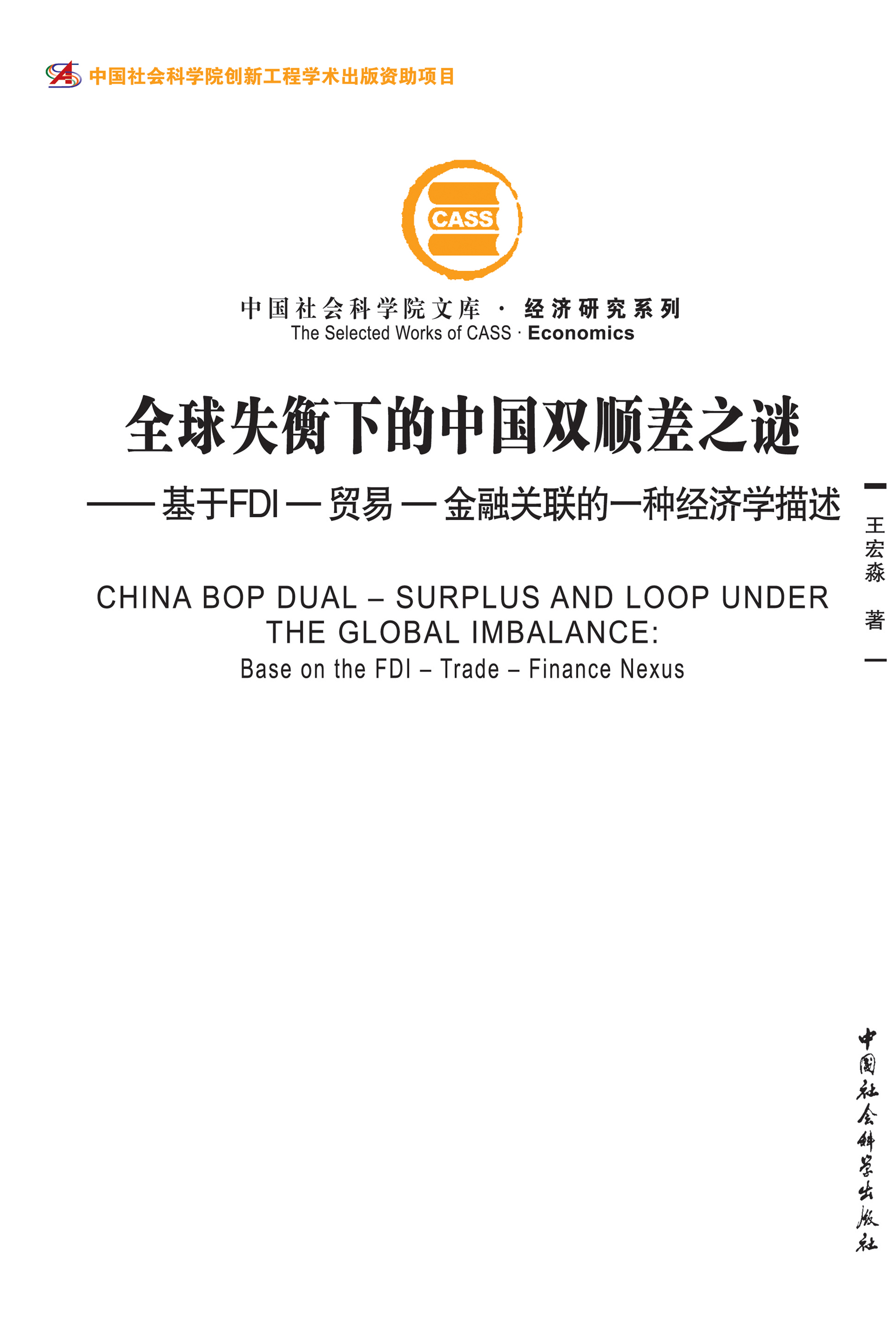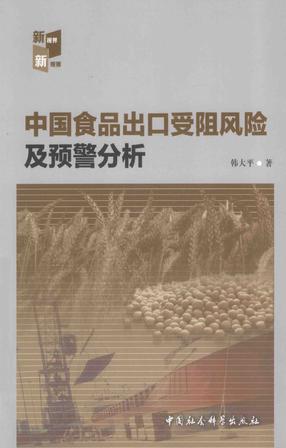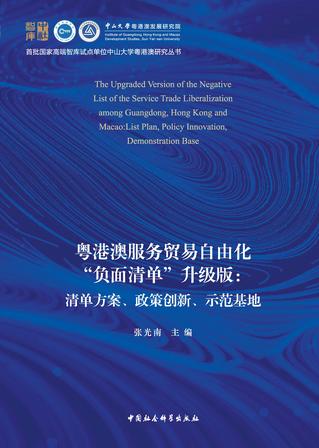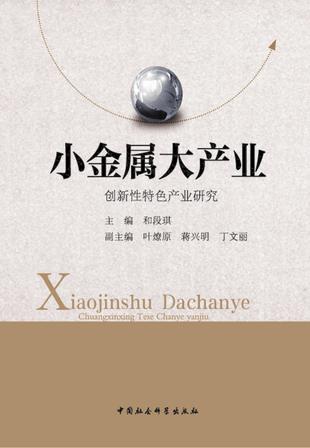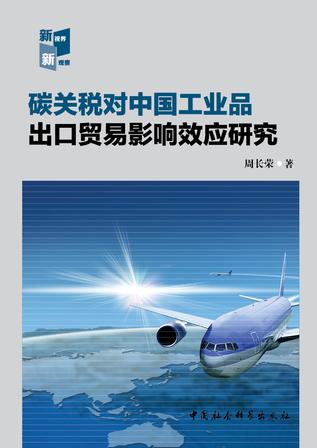内容简介
作者简介
目录
Since the early 1990s,An interesting phenomenon has emerged from Chinese Balance of Payments Sheet:Dual-surplus of current account and capital account,which was come from trade surplus and FDI surplus respectively.At the same time,the global imbalance(American current account deficits)also has been maintaining a generation.Why the “classical international auto-adjusted mechanism”was failure to function?Except the international currency system’s inherent causation,it dues to the interaction between the global manufacture’s transfers driven by the optimum investment decision of firms and a country’s domestic fundamentals and policies.Imbalance thus became a long-run phenomenon,it can not been solved in a short time.We also can not found the solution in early Macroeconomic theories of international payments,because they gave little attentions to FDI factor.This book is formed from my postdoctoral dissertation.Based on the FDI-trade-finance nexus,placing the “China Dual-surplus”under Global imbalance,I tried to give a new theoretic explanation.First,I developed a three-area FDI-trade nexus model,discussing six investment systems and their macro-effects on international payments,and found that as a result of “North-South”FDI and trade behaviors,the global imbalance—the north motherland’s trade(current account)deficits and the south(china)host country’s trade surplus,are “endogenic”.Then,I established an intertemporal model of current account,which considered the factors of FDI,the divided two sub-economy of domestic capital section and foreign capital section under the government’s control,and gained the stable state condition of current account balance.Next,the book analyzed the external macro-determinants(push force)and the internal policy’s cause(pull force)of China’s Dual-surplus,discussing the behaviors of domestic capital part,foreign capital part and the government part and their effects on international payments respectively.Last,I gave some policy suggestions to solve the imbalance.In which,transiting some of the “Neomercantile System”measures,reducing the growth rate of government saving and expenses,carrying out the balanced economic growth,are the most important ways.Key Words:China BOP Dual-surplus;Global Imbalance;FDI-trade-Finance Nexus;International Payments;Intertemporal Approach;Neomercantilism
全部显示∨
第一章 导言第一节 国际收支失衡之谜
第二节 理论与现实的困惑
第三节 本书的探索:主要观点
第二章 全球失衡下中国外部不平衡之谜的特征事实第一节 全球失衡及其一般事实一 美国“双赤字”加剧,债务增长迅速
二 与美国(欧盟)的逆差相对照,亚洲的经常项目盈余在近年明显扩大
三 近年为美国赤字融资的2/3来自亚洲官方机构
第二节 中国外部失衡的内在结构:国际收支平衡表的纵向关联一 经常项失衡主要来自加工制造业贸易顺差
二 金融项目顺差主要来自FDI流入
三 FDI—贸易关联的显现
第三节 中国视角的外部失衡:美欧—中国—泛亚的三角横向关联一 国际生产联系:FDI流入的地区结构
二 国际贸易关联:中国对欧美顺差和对泛亚贸易逆差的对称性
三 国际金融关联:中国储备资产的累积和运用
第四节 小结:全球失衡下中国双顺差的真实图景
第三章 微观机理:跨国直接投资驱动下的国际收支失衡内生性第一节 FDI—贸易如何关联:理论假说一 水平、垂直一体化与出口平台型FDI
二 不同FDI行为下的贸易后果
三 FDI—贸易平衡的国家差异
第二节 一个世界三地区FDI—贸易关联模型一 基本假定
二 六种投资模式下的企业行为
三 各种模式下的国际收支后果
第三节 数字一般均衡及其直观解释一 世界分享低成本南方投资体制开放的收益
二 南方参与全球化的“学习成本”
三 跨国投资驱动下“全球国际收支失衡”的内生性
四 南方组装成本上升之后果
第四章 宏观分析:政策干预下的内外资两部门经济与经常项目动态学第一节 包含出口补贴的简单模型一 经济环境及行为
二 宏观经济均衡及动态学
三 简要结论
第二节 进一步考虑FDI流入的经常项目动态学一 国内代理人、外资企业和本国政府三类经济主体的行为
二 宏观经济均衡及其动态
三 达到经常项目平衡的稳态条件
四 结构性冲击的比较静态
第三节 数值模拟
第五章 中国双顺差与全球失衡:经济解释与政策含义第一节 “外部失衡”的微观动因和宏观根源一 最优投资决策下的国际分工调整、贸易创造与顺差转移
二 “东亚制造”重心迁移与中国“新重商主义”的历史耦合
三 内、外资两部门经济及其国际收支后果
四 两部门分割下的“资本迂回”与制度性套利加剧双顺差
五 政府行为对双顺差的影响
第二节 双顺差可否持续?一 内外资两部门下的不平衡经济增长
二 普雷维什·辛格效应与“贫困化增长”的潜在风险
三 环境污染、贸易摩擦与国际争端加剧
四 持有高额外汇储备的成本
五 美元本位下的货币冲击:“桑顿效应”
六 国际金融危机的重大冲击和长期影响
第三节 双顺差的应对之策
第六章 研究结论
附录A “全球失衡”的研究综述一 全球失衡的原因
二 全球失衡的持续性
三 全球失衡的解决之道
附录B 中国外部失衡的研究综述一 双顺差的度量
二 双顺差的原因
三 双顺差的后果
四 双顺差的持续性与对策
附录C 三地区FDI—贸易关联模型的计算过程C-0 利润代数学和纳什均衡
C-1 纯粹民族企业体制的情况
C-2 纯粹水平型体制的情况
C-3 出口平台型体制的情况
C-4 垂直/出口平台型企业体制的情况
C-5 不对称垂直/出口平台型企业体制Ⅰ(泛东亚保留一家母国工厂)的情况
C-6 不对称垂直/出口平台型企业体制Ⅱ(西方保留一家母国工厂)的情况
附录D 考虑FDI流入因素的经常项目动态模型的计算结果D-1 模型涉及的参数及有关变量求解结果
D-2 政策参数的边际影响(比较静态分析)
参考文献
后记
出版补记
该书无电子版哦,想阅读点购买纸书吧,现在还在打折喔(⊙o⊙)
